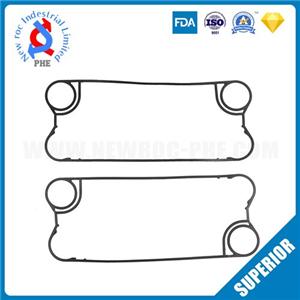Analyze when the semi-welded plate heat exchanger plates need to be replaced
Semi-welded plate heat exchangers need regular cleaning to increase efficiency, and at the same time, it can also increase its service life. Now let’s talk to you about the circumstances under which it can’t just clean the plates to make the equipment operate normally. It can run normally only after replacement.
The main function of the plate is to separate the medium and conduct heat exchange. It can be said that the plate is a very important part of the heat exchanger. The material of its plate is mainly stainless steel at present, of course, there are also titanium, titanium palladium, Copper, nickel, etc., what do we need to do if there is a problem with its plate?
When the film is abnormal, we need to take corresponding measures, such as scaling, corrosion, etc., which are very common. Its plates need to be repaired or replaced when the following conditions occur:
The heat exchanger plates are severely fouled, making the heat exchanger unable to work normally, and it needs to be cleaned by chemical descaling. When the plates are broken and perforated due to corrosion and accidental damage, heat exchanger plates are required.
Because it works for a long time, the surface of the heat transfer plate will produce different degrees of dirt or deposits, thereby increasing the flow resistance and reducing the heat transfer function. These are mainly manifested as the increase in the pressure difference between the inlet and outlet pressure gauges and the decrease in the outlet temperature of the cold medium. We need to clean it, so what causes the blockage and scaling of the semi-welded plate heat exchanger?
1. Blockage
Particles larger than 1.5~3mm in diameter are easy to block the plate channel, and its flow channel gap is small, which causes the equipment to be blocked and the heat exchange capacity is greatly reduced, which seriously causes the continuous production of the device to be interrupted. Therefore, a coarse filter or a backwashing device can be installed at the entrance of the medium according to needs to avoid its blockage.
2. Scaling
In severe cases, it will block the plate channel. Its plate is designed with a large number of supporting points. Fouling can cause the heat transfer coefficient of the heat transfer equipment to decrease. It is designed to turbulent flow and pressure support for the medium, and solid debris is easy Where it accumulates, the disadvantage is that the fluid forms a local stagnant flow to generate dirt. The calcium and magnesium ions in the medium can easily form honeycomb-like dirt after precipitation at a suitable temperature.




